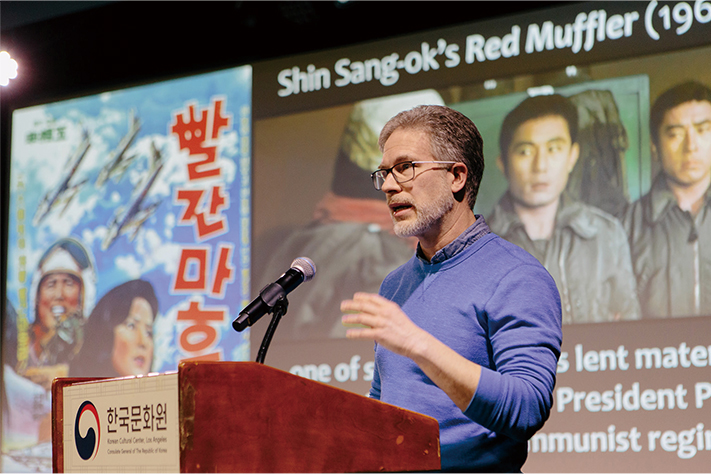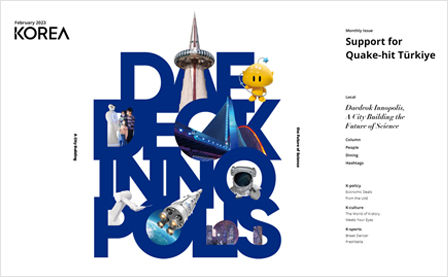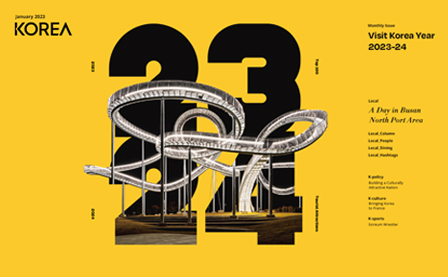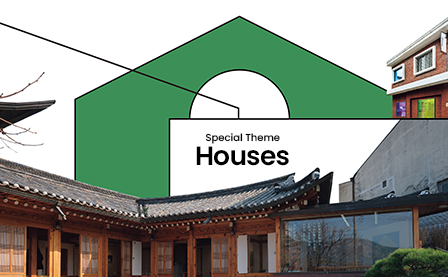April 2023

K-culture


Photos courtesy by KCCLA
October 27, 1919 was a monumental day in Korean film history. This was the day the first film made by a Korean was screened. It was a slightly incomplete form of a serial film that showed outdoor action scenes between shorts. The first film screening in the world took place in 1895, so it can be said that Korea was a latecomer to the film industry.
100-Years of Korean Cinema Led by Passion
The 1920s ushered in the full-fledged feature film era in Korea. Classical novels Chunhyangjeon and JanghwaHongryeonjeon were turned into films, and the era of silent films opened in earnest. The film industry began to develop rapidly as the first Korean talkies were produced during the 1930s.
Korea faced a whirlwind of historical events during the 1940s and 1950s: liberation and the Korean War. However, the passion of Korean filmmakers did not subside. They worked hard to overcome the film production environment and system that had been devastated after the Korean War in an attempt to continue the legacy of Korean cinema. Such efforts became the driving force to develop film into a powerful form of mass media.
In the 1960s, Korean films faced another turning point through state-led industrialization. While the outward appearance was broadened with government support, there were restrictions on freedom of expression. As a result, Korean filmmakers began adapting novels that had been recognized for their artistic value. Their attempts made it possible for literary films to blossom and help them maintain not only their popularity but also artistic quality.
The period from the 1970s to the early 1980s has been regarded as a period of stagnation for Korean cinema. Korean cinema was pushed back by the spread of television and the stronghold of imported foreign films. The number of moviegoers, around 173 million in 1969, decreased to less than 100 million in 1974. During this period, Korean filmmakers maintained their livelihood by producing melodramas and martial art films.
Korean cinema took a leap forward once again during the late 1980s with the advent of the Korean New Wave films that contained a clear theme and showed a new aesthetic that broke away from the conventional. Films such as Park Kwang-su’s Chil-su and Man-su, which dealt with the issue of division, and Bae Chang-ho’s Whale Hunting, which showcased a sophisticated melodramatic style, were created during this time.
The heyday of Korean cinema had finally arrived by the 2000s. The film industry began to gain momentum as young filmmakers drew investment from large corporations in the form of video rights. Kang Woo-suk’s Silmido and Kang Je-kyu’s Taegukgi: The Brotherhood of War recorded over 10 million viewers, ushering in an era of films with 10 million viewers.
Korean films began to appear on the world stage in earnest. Overseas at the Cannes Film Festival, Director Park Chan-wook’s Oldboy won the Grand Prize while Director Im Kwon-taek won Best Director for Chihwaseon. Meanwhile, Director Lee Chang-dong won Best Direction for Oasis at the Venice International Film Festival.
 Group photo of lecturers and officials at the ‘Film Symposium: The Golden Age of Cinema in Postwar South Korea (1954-1972)’
Group photo of lecturers and officials at the ‘Film Symposium: The Golden Age of Cinema in Postwar South Korea (1954-1972)’Exploring the Roots of Korean Cinema
Building on the 100-year history of Korean cinema is Bong Joon-ho’s Parasite, which won the Palme d’Or at the 2019 Cannes Film Festival. The film made history by winning four awards, including Best Picture, at the Academy Awards in February 2020. Korean actors have also been very active on the world stage. In April 2021, actress Youn Yuh-jung became the first Korean to win the Academy Award for Best Supporting Actress. Youn also received awards at more than 40 film festivals.
Korean films have been well-received around the world, and the 100-year history of Korean cinema has also garnered attention. As a result, a movement to explore the origins of Korean cinema has begun abroad centered on the Korean Culture and Information Service.
The Korean Cultural Center Los Angeles held a “Film Symposium: The Golden Age of Cinema in Postwar South Korea (1954-1972” in February of this year with the Los Angeles County Museum of Art, the UCLA Center for Korean Studies, and the non-profit organization GYOPO.
The symposium included presentations and topical discussions on the most dynamic and active Korean directors and films in regards to production, box office success and development from the 1950s to 1970s (after the Korean War). Film scholars, writers and film critics of US films also attended in-depth discussions on Korean film that were held at the symposium.
The panelists at the symposium introduced Korean masterpieces Madame Freedom, The Housemaid, Mother and a Guest and Aimless Bullet that were created thanks to the passion of Korean filmmakers despite difficult production conditions after the Korean War. Those in attendance also had the opportunity to look at the activities of the great directors of the time such as Han Hyeong-Mo, Shin Sang-ok and Lee Man-hee. The symposium also offered a program that introduced the efforts of scholars taken to restore films and Korea’s systematic translation system.
The search for the history of Korean cinema continues on. The 100-year history of Korean cinema is like the roots and soil of a tree that produces good fruit and will continue to receive attention in the future.
 Professor David Scott Diffrient of Colorado State University gives a lecture at the 2023 Korean Modern Film Symposium.
Professor David Scott Diffrient of Colorado State University gives a lecture at the 2023 Korean Modern Film Symposium. Academy Award-winning scene of ‘Parasite,’ a film that left a mark on 100 years of Korean film history © Yonhap News
Academy Award-winning scene of ‘Parasite,’ a film that left a mark on 100 years of Korean film history © Yonhap News View of all
View of all





